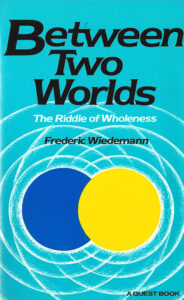Between Two Worlds – The Riddle of Wholeness
By Frederic Wiedemann.
194 Pages | A Quest original, first edition 1986 | Softcover | Theosophical Publishing House, London | ISBN: 0835606023.
" When clinical psychology rejects the soul, then clinical psychology loses its ability to heal ".
Being human is roughly half-way to divinity. Thus it is that we are caught between two worlds says Frederic Wiedemann. How can we bring together the material side of man with his transpersonal nature? Or is this an irresolvable paradox? The school of thought, that comes the closest to resolving the enigma is the twenty-year old transpersonal consciousness movement. This discipline provides Wiedemann with his 'take-off' point as he focuses on the limitations of clinical psychology in its unwillingness to include spirit as a factor in therapy. To resolve this dilemma of body and spirit, the author uses the metaphor of the soul as the bridge between two worlds.
From Chapter 13 - 'Making Decisions with Integrity' (p. 166):
" If the soul perspective is used with the proper balance of power, wisdom, and love, then it offers a unique ethical direction, combining both the wisest teachings of religion and the deepest aspects of the human potential. But one must be willing to labor for it and to strive for it and to strive for a balance between immanence and transcendence. "
 Bezig met bijwerken...
Bezig met bijwerken...